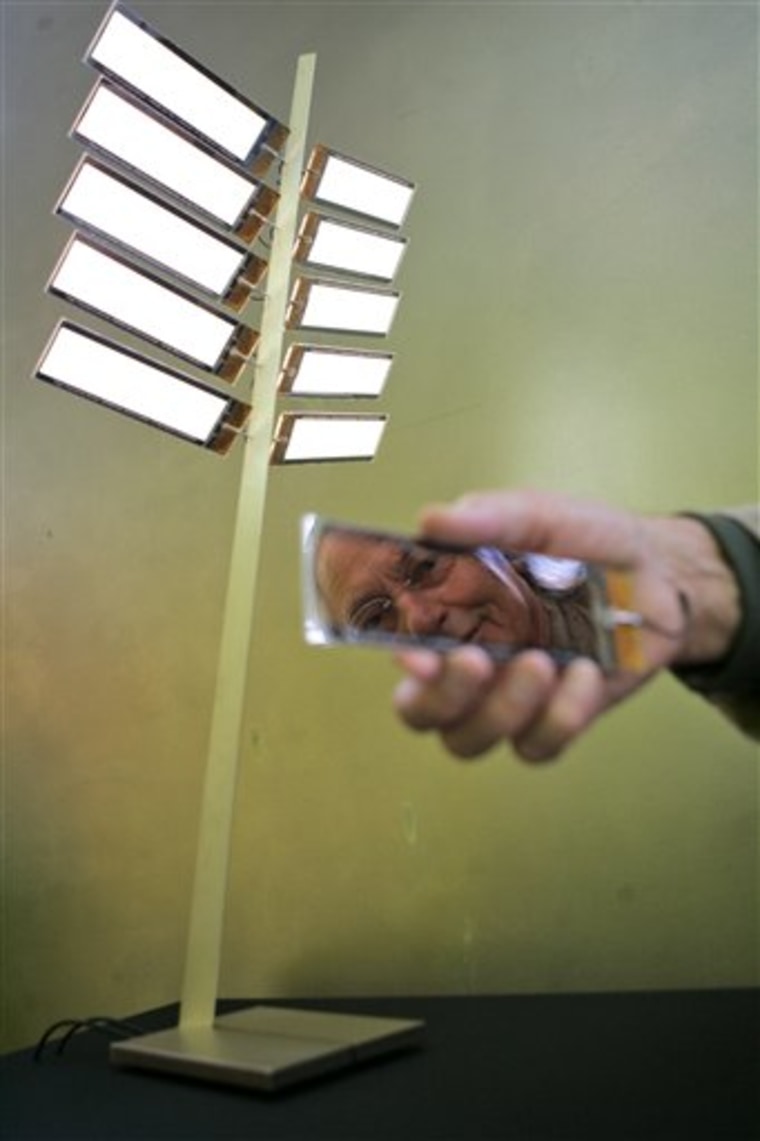Picture it as a tilted signpost with each sign a softly glowing panel or as a metal tree with phosphorescent leaves lighting up your desk.
This offbeat table lamp uses organic light-emitting diodes, or OLEDs, a new technology that is being hailed as the future both of TVs and of lighting. German designer Ingo Maurer and his lighting company this week showed the first OLED lamp you can buy, at his studio in Manhattan.
The "can buy" part is qualified, of course. Maurer hasn't disclosed price of the 25 limited-edition copies of the lamp, but it will probably be in the "if you have to ask, you can't afford it" category.
Called "Early Future," the lamp uses 10 OLED panels from Osram Opto Semiconductors, a subsidiary of German industrial company Siemens AG. Each panel measures about six inches by two inches by about one-eighth inch thick. One side has a thin layer of organic compounds, which glow when current is applied.
"It's so thin, so delicate, but you can do a lot of different things with it," said Bernhard Dessecker, who works for Maurer. They're particularly interested in transparent OLEDs that Osram has said it can make, which could mean lights can be built into windows and turn them into light sources when night falls.
Maurer also made a one-off OLED fixture with nearly 100 panels suspended from the ceiling in an undulating mesh.
Several things have to be improved in OLEDs before they can become mainstream products, however. Osram's panels are only just bright enough for a table lamp, and they last only 2,000 hours before dimming to half their brightness.
But the field is advancing. Sony Corp. recently started selling the first OLED TV for $2,500. Its 11-inch screen is capable of producing a bright white light for about 5,000 hours, according to research firm DisplaySearch, which tested the longevity.
